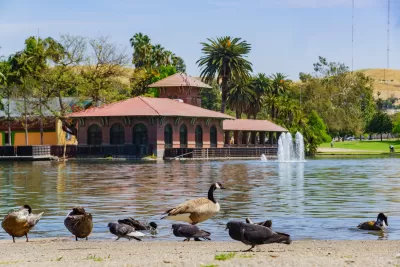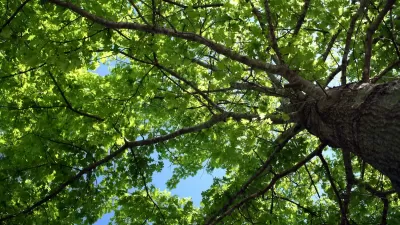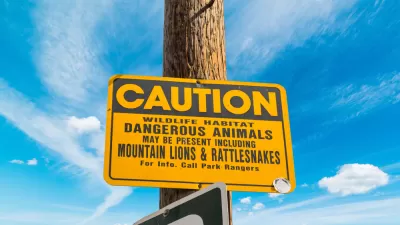A legacy of historic housing discrimination and disinvestment is having lasting effects on more than just human lives in cities.

An article by Dorany Pineda on Phys.org describes how bird population distribution in Los Angeles is shaped by historic development and discrimination patterns.
As Pineda explains, researchers from Cal State Los Angeles are studying the presence of birds in various neighborhoods to understand how density, tree canopy, and other factors impact where different species of urban birds can successfully live. The research was “a vivid illustration of the so-called luxury effect—the phenomenon by which wealthier, and typically whiter, areas attract a larger and more diverse population of birds.”
According to the researchers, “Historically redlined nonwhite communities, such as Boyle Heights, have less tree canopy and greater housing density than greenlined neighborhoods. As a result, these areas have less bird biodiversity and larger populations of synanthropic birds—species adapted to dense urban environments such as house finches and sparrows, European starlings, common pigeons and northern mockingbirds.” By contrast, ‘greenlined’ areas have more trees and thus a greater diversity of bird species.
The study is another example of the lasting impacts of redlining and other discriminatory policies that continue to affect American cities. “Other researchers have found strong links between historically redlined communities and increased risks of diabetes, hypertension and early mortality from heart disease. Redlined communities are also hotter and have more pollution and less canopy cover and green spaces than non-redlined regions, studies show.”
The study authors note that to promote urban biodiversity equitably, “cities across the U.S. and the world must work to understand their racist and segregationist histories, which is a necessary step toward creating conditions that support urban wildlife along with a more equitable experience of wildlife for a city's inhabitants.”
FULL STORY: How LA's bird population is shaped by historic redlining and racist loan practices

Planetizen Federal Action Tracker
A weekly monitor of how Trump’s orders and actions are impacting planners and planning in America.

Congressman Proposes Bill to Rename DC Metro “Trump Train”
The Make Autorail Great Again Act would withhold federal funding to the system until the Washington Metropolitan Area Transit Authority (WMATA), rebrands as the Washington Metropolitan Authority for Greater Access (WMAGA).

The Simple Legislative Tool Transforming Vacant Downtowns
In California, Michigan and Georgia, an easy win is bringing dollars — and delight — back to city centers.

The States Losing Rural Delivery Rooms at an Alarming Pace
In some states, as few as 9% of rural hospitals still deliver babies. As a result, rising pre-term births, no adequate pre-term care and harrowing close calls are a growing reality.

The Small South Asian Republic Going all in on EVs
Thanks to one simple policy change less than five years ago, 65% of new cars in this Himalayan country are now electric.

DC Backpedals on Bike Lane Protection, Swaps Barriers for Paint
Citing aesthetic concerns, the city is removing the concrete barriers and flexposts that once separated Arizona Avenue cyclists from motor vehicles.
Urban Design for Planners 1: Software Tools
This six-course series explores essential urban design concepts using open source software and equips planners with the tools they need to participate fully in the urban design process.
Planning for Universal Design
Learn the tools for implementing Universal Design in planning regulations.
Smith Gee Studio
City of Charlotte
City of Camden Redevelopment Agency
City of Astoria
Transportation Research & Education Center (TREC) at Portland State University
US High Speed Rail Association
City of Camden Redevelopment Agency
Municipality of Princeton (NJ)





























